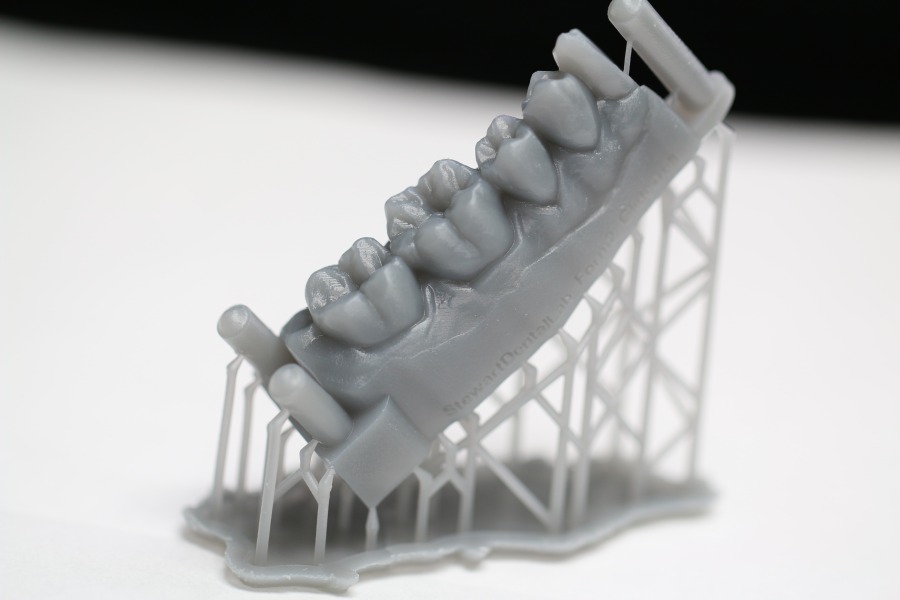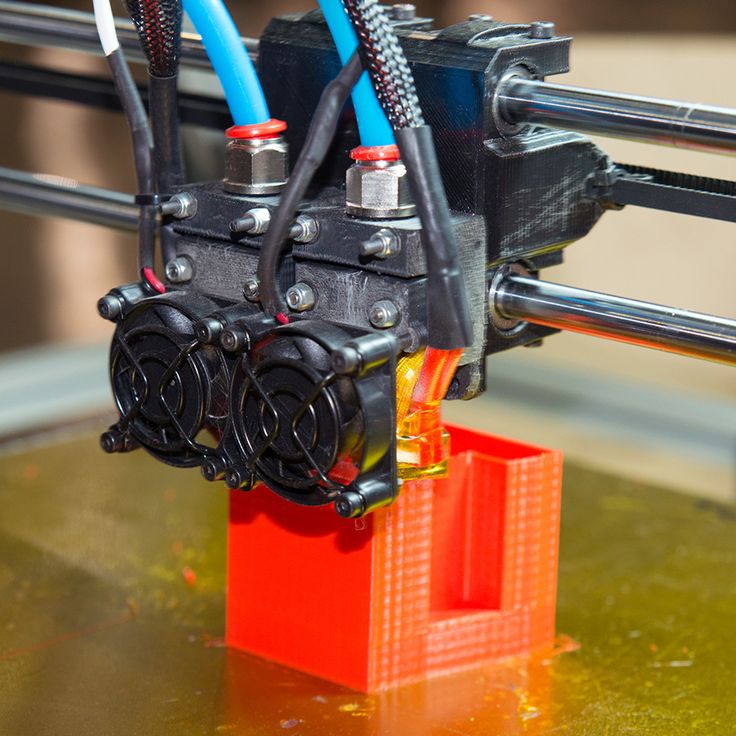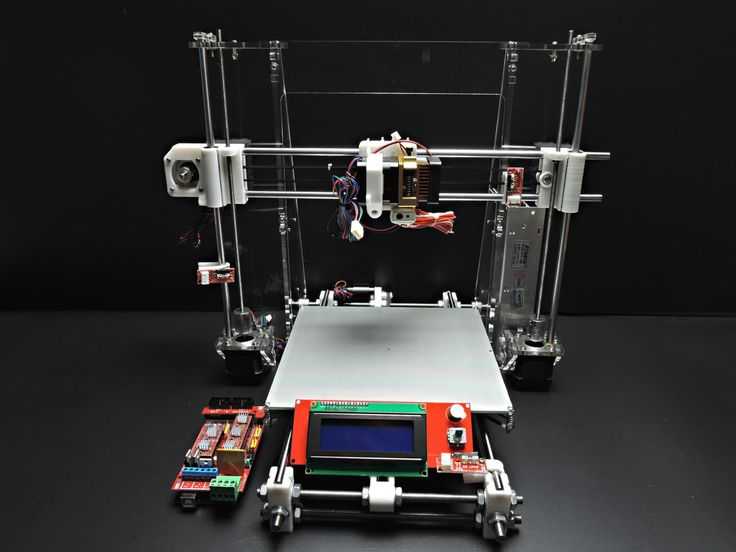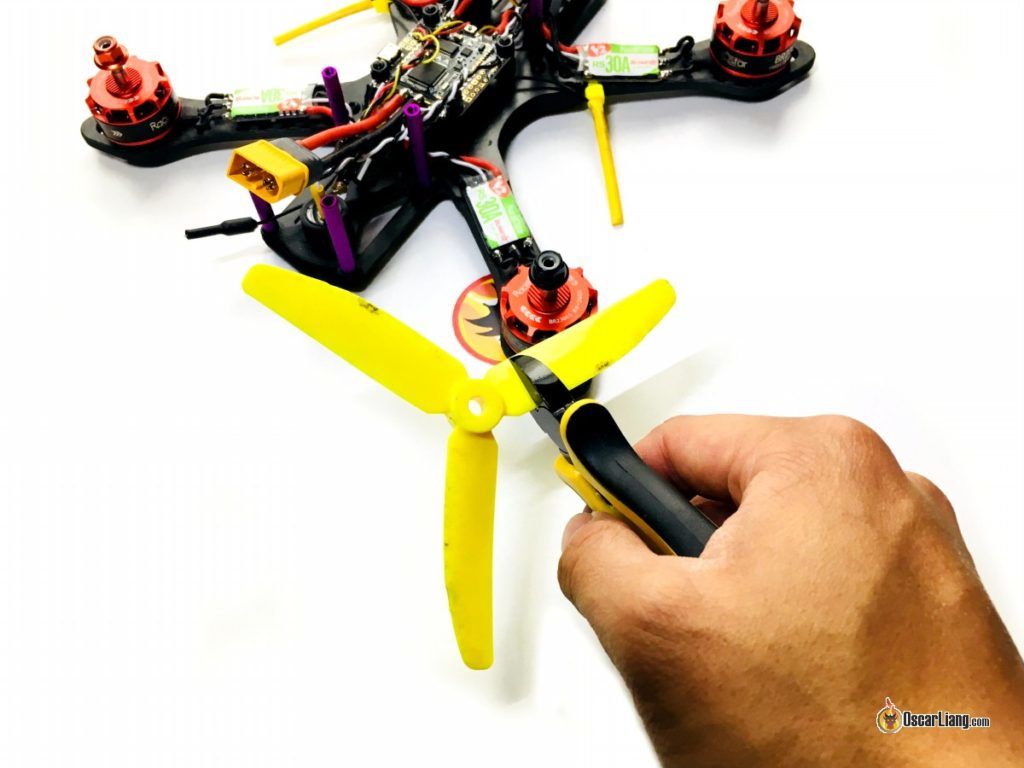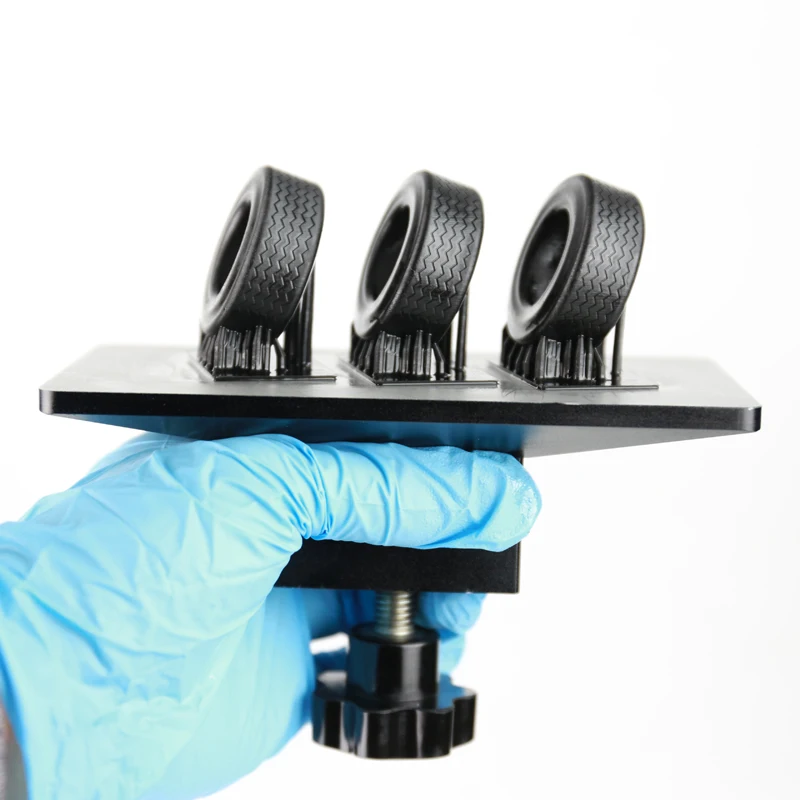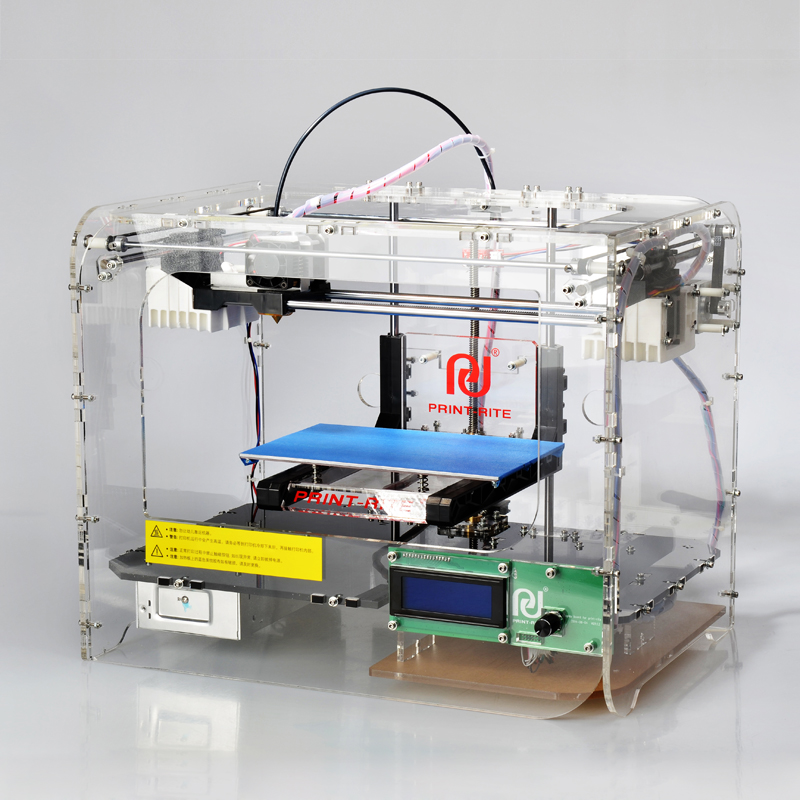Density of 3d printer plastic
The densities of all 3D printing materials
Today at Bitfab we’re going to talk about a subject that every good maker ends up wondering about: what is the density of a filament, how much is the weight of each meter, and how many meters of it are in a one kilo coil.
At first glance, it might seem silly to you; how many objects in our daily life do we need to know this data from? Practically none, but in this point it is essential, because with this data we can know exactly the amount of spent filament or if really 1kg of a material from one coil compensates us more than another.
How? We’ll tell you, so keep reading this because you’ re going to like it 🙂
📖 What do you want to read?
The density chart of all 3D materials
Here’s a list of different materials taken from this article on 3D printer filaments to give you an idea of what’s on the market.
In grams per cubic centimeter so you can see for yourself!
| Material | Density [g/cm3] |
| PLA | 1. |
| ABS | 1.04 |
| PETG | 1.27 |
| NYLON | 1.52 |
| Flexible (TPU) | 1.21 |
| Polycarbonate (PC) | 1.3 |
| Wood | 1.28 |
| Carbon FIber | 1.3 |
| PC/ABS | 1.19 |
| HIPS | 1.03 |
| PVA | 1.23 |
| ASA | 1.05 |
| Polypropylene (PP) | 0.9 |
| Acetal (POM) | 1.4 |
| PMMA | 1.18 |
| Semi flexible (FPE) | 2.16 |
🥁🥁🥁 Here’s also… a graphic, so you can compare!
Here there are plenty of materials such as PLA, ABS, Polypropylene (PP), PETG, flexible filaments (TPU) or filaments with carbon fibre.
The lightest material for printing
Do you want to print the lightest pieces? A drone, a part for a radio-controlled plane… The lightest material used in 3D printing is Polypropylene, with only 0. 9 grams per cubic centimeter. Although we warn you: PP warping makes it quite difficult to print for large parts!
9 grams per cubic centimeter. Although we warn you: PP warping makes it quite difficult to print for large parts!
The heaviest 3D printing material
The heaviest materials on our chart are semi-flexible FPE and nylon (Polyamide), so they can affect you in applications where you are looking for lightness.
Apart from these, there are other heavier materials that we have not yet considered: metal-filled materials. There are materials filled with bronze, brass, copper, iron… which considerably increase the density of the material. These filaments usually have an aesthetic purpose and that is why we have left them out of our list of materials.
How many meters of material are there in a kilo of filament? (with chart)
The chart you were looking for to go from kilos to meters of material, to know how many meters there are in a coil, both for 1.75mm and 3mm filament.
| Material | How many meters in 1kg of material (3mm)? | How many meters in 1kg of material (1. 75mm)? 75mm)? |
| PLA | 114 | 335 |
| ABS | 136 | 400 |
| PETG | 111 | 328 |
| Nylon | 93 | 274 |
| Flexible (TPU) | 117 | 344 |
| Polycarbonate (PC) | 109 | 320 |
| Wood | 111 | 325 |
| Carbon Fiber | 109 | 320 |
| PC/ABS | 119 | 350 |
| HIPS | 137 | 404 |
| PVA | 115 | 338 |
| ASA | 135 | 396 |
| Polypropylene (PP) | 157 | 462 |
| Acetal (POM) | 101 | 297 |
| PMMA | 120 | 353 |
| Semi flexible (FPE) | 66 | 193 |
Do you want to know how we calculated this chart? This is the formula we have used. Let’s take an example of a 1.75mm coil weighing 1kg. You could do the same calculation for a 3mm coil.
How many grams are in a meter of filament? (with chart)
The question asked the other way around: how much does a meter of 3D printing filament weighs. We have also generated a chart with all the information so that you can consult it comfortably.
| Material | How much does 1 meter of 1.75mm filament weighs? [grams] | How much does 1 meter of 3mm filament weighs? [grams] |
| PLA | 2.98 | 8.76 |
| ABS | 2.50 | 7.35 |
| PETG | 3.05 | 8.97 |
| Nylon | 3.65 | 10.74 |
| Flexible (TPU) | 2.91 | 8.55 |
| Polycarbonate (PC) | 3.13 | 9.18 |
| Wood | 3.08 | 9.04 |
| Carbon Fiber | 3.13 | 9.18 |
| PC/ABS | 2.86 | 8.41 |
| HIPS | 2.48 | 7.28 |
| PVA | 2. 96 96 | 8.69 |
| ASA | 2.52 | 7.42 |
| Polypropylene (PP) | 2.16 | 6.36 |
| Acetal (POM) | 3.37 | 9.89 |
| PMMA | 2.84 | 8.34 |
| Semi flexible (FPE) | 5.19 | 15.26 |
How much does my 3D printed part weigh?
As a curiosity, in Cura you can also see the length of filament you spend per piece in the lower part of the program.
How to calculate the density of a filament with all formulas
As we have mentioned, density is the relationship between mass and volume of something; in this case our 3D filament.
We already have the mass of the filaments, since they usually come in coils of 1[kg] of weight (minus the weight of the support). We only have to know the volume, and here comes the problem.
If we consider the filament as if it were completely stretched, it would be a very long cylinder tube, like this, where we are going to define the main measurements.
To calculate the volume of that cylindrical tube, we have the following procedure:
We have the filament radius, and we understand that it is 1.75[mm]/2. If we wanted to do a more precise calculation, we would take into account that the diameter of a filament has a tolerance of ±0.05[mm] and there are even manufacturers that reach ±0.02[mm].
The fact is that in order to do this analysis, you don’t have to take this into account, but it’s always good to know it (so you can look at it in the product specifications when you buy it).
Only length would remain and this is the one that does not normally come in the manufacturer’s specifications. However, it is usually between 335[m], although this value can vary between companies.
Finally, to calculate the density of a 1[kg] filament:
What did you think of our article on densities of 3D materials?
And this is as far as the article goes. We hope you liked it. Now you only need to read it a couple more times, and practice.
We would love if you could comment on the meters of the new filament you buy, and if the formula has really hit the nail on the head (when you finish it clearly).
Greetings and see you in the next article. Meanwhile, if you need something, you know you can count on our online 3D printing service.
PLA Filament | 3D4Makers | 3D printing
Roll over image to zoom in Click on image to zoom
Save €-20.65
3D4MakersSKU: PLAXX-2008-175-750-3D4M
9 reviews
Color: Orange (RAL 2008)
Orange (RAL 2008)
Blue (RAL 5002)
Red (RAL 3020)
Green (RAL 6029)
Black (RAL 9011)
Natural
White (RAL 9003)
Yellow (RAL 1023)
Apple Green (RAL 6018)
Sky Blue (RAL 5015)
Magenta (RAL 4010)
Light Grey (RAL 7035)
Silver (RAL 9006)
Gold (RAL 1036)
Iron Grey (RAL 7011)
Middle Blue (Pantone 7691 C)
Yellow Gold (Pantone 466 C)
Orange Fluor (Pantone 021 C)
Snow White (Pantone 656 C)
Green Fluor (Pantone 3529 C)
Leaf Green (RAL 6002)
Diameter: 1.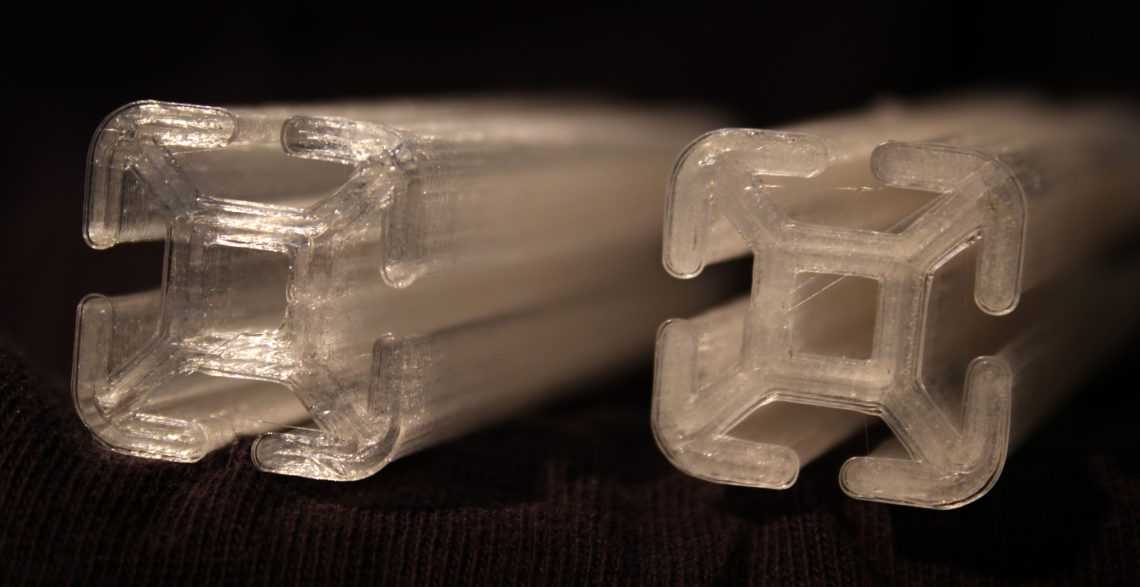 75mm
75mm
1.75mm
2.85mm
Weight: 750 gram
750 gram
2300 gram
Variant
Orange (RAL 2008) / 1.75mm / 750 gram - €20.65Orange (RAL 2008) / 1.75mm / 2300 gram - €50.95Orange (RAL 2008) / 2.85mm / 750 gram - €20.65Orange (RAL 2008) / 2.85mm / 2300 gram - €50.95Blue (RAL 5002) / 1.75mm / 750 gram - €20.65Blue (RAL 5002) / 1.75mm / 2300 gram - €50.95Blue (RAL 5002) / 2.85mm / 750 gram - €20.65Blue (RAL 5002) / 2.85mm / 2300 gram - €50.95Red (RAL 3020) / 1.75mm / 750 gram - €20.65Red (RAL 3020) / 1.75mm / 2300 gram - €50.95Red (RAL 3020) / 2.85mm / 750 gram - €20.65Red (RAL 3020) / 2.85mm / 2300 gram - €50.95Green (RAL 6029) / 1.75mm / 750 gram - €20.65Green (RAL 6029) / 1.75mm / 2300 gram - €50.95Green (RAL 6029) / 2. 85mm / 750 gram - €20.65Green (RAL 6029) / 2.85mm / 2300 gram - €50.95Black (RAL 9011) / 1.75mm / 750 gram - €20.65Black (RAL 9011) / 1.75mm / 2300 gram - €50.95Black (RAL 9011) / 2.85mm / 750 gram - €20.65Black (RAL 9011) / 2.85mm / 2300 gram - €50.95Natural / 1.75mm / 750 gram - €20.65Natural / 1.75mm / 2300 gram - €50.95Natural / 2.85mm / 750 gram - €20.65Natural / 2.85mm / 2300 gram - €50.95White (RAL 9003) / 1.75mm / 750 gram - €20.65White (RAL 9003) / 1.75mm / 2300 gram - €50.95White (RAL 9003) / 2.85mm / 750 gram - €20.65White (RAL 9003) / 2.85mm / 2300 gram - €50.95Yellow (RAL 1023) / 1.75mm / 750 gram - €20.65Yellow (RAL 1023) / 1.75mm / 2300 gram - €50.95Yellow (RAL 1023) / 2.85mm / 750 gram - €20.65Yellow (RAL 1023) / 2.85mm / 2300 gram - €50.95Apple Green (RAL 6018) / 1.75mm / 750 gram - €20.65Apple Green (RAL 6018) / 1.75mm / 2300 gram - €50.95Apple Green (RAL 6018) / 2.85mm / 750 gram - €20.65Apple Green (RAL 6018) / 2.85mm / 2300 gram - €50.95Sky Blue (RAL 5015) / 1.75mm / 750 gram - €20.
85mm / 750 gram - €20.65Green (RAL 6029) / 2.85mm / 2300 gram - €50.95Black (RAL 9011) / 1.75mm / 750 gram - €20.65Black (RAL 9011) / 1.75mm / 2300 gram - €50.95Black (RAL 9011) / 2.85mm / 750 gram - €20.65Black (RAL 9011) / 2.85mm / 2300 gram - €50.95Natural / 1.75mm / 750 gram - €20.65Natural / 1.75mm / 2300 gram - €50.95Natural / 2.85mm / 750 gram - €20.65Natural / 2.85mm / 2300 gram - €50.95White (RAL 9003) / 1.75mm / 750 gram - €20.65White (RAL 9003) / 1.75mm / 2300 gram - €50.95White (RAL 9003) / 2.85mm / 750 gram - €20.65White (RAL 9003) / 2.85mm / 2300 gram - €50.95Yellow (RAL 1023) / 1.75mm / 750 gram - €20.65Yellow (RAL 1023) / 1.75mm / 2300 gram - €50.95Yellow (RAL 1023) / 2.85mm / 750 gram - €20.65Yellow (RAL 1023) / 2.85mm / 2300 gram - €50.95Apple Green (RAL 6018) / 1.75mm / 750 gram - €20.65Apple Green (RAL 6018) / 1.75mm / 2300 gram - €50.95Apple Green (RAL 6018) / 2.85mm / 750 gram - €20.65Apple Green (RAL 6018) / 2.85mm / 2300 gram - €50.95Sky Blue (RAL 5015) / 1.75mm / 750 gram - €20. 65Sky Blue (RAL 5015) / 1.75mm / 2300 gram - €50.95Sky Blue (RAL 5015) / 2.85mm / 750 gram - €20.65Sky Blue (RAL 5015) / 2.85mm / 2300 gram - €50.95Magenta (RAL 4010) / 1.75mm / 750 gram - €20.65Magenta (RAL 4010) / 1.75mm / 2300 gram - €50.95Magenta (RAL 4010) / 2.85mm / 750 gram - €20.65Magenta (RAL 4010) / 2.85mm / 2300 gram - €50.95Light Grey (RAL 7035) / 1.75mm / 750 gram - €20.65Light Grey (RAL 7035) / 1.75mm / 2300 gram - €50.95Light Grey (RAL 7035) / 2.85mm / 750 gram - €20.65Light Grey (RAL 7035) / 2.85mm / 2300 gram - €50.95Silver (RAL 9006) / 1.75mm / 750 gram - €20.65Silver (RAL 9006) / 1.75mm / 2300 gram - €50.95Silver (RAL 9006) / 2.85mm / 750 gram - €20.65Silver (RAL 9006) / 2.85mm / 2300 gram - €50.95Gold (RAL 1036) / 1.75mm / 750 gram - €20.65Gold (RAL 1036) / 1.75mm / 2300 gram - €50.95Gold (RAL 1036) / 2.85mm / 750 gram - €20.65Gold (RAL 1036) / 2.85mm / 2300 gram - €50.95Iron Grey (RAL 7011) / 1.75mm / 750 gram - €20.65Iron Grey (RAL 7011) / 1.75mm / 2300 gram - €50.
65Sky Blue (RAL 5015) / 1.75mm / 2300 gram - €50.95Sky Blue (RAL 5015) / 2.85mm / 750 gram - €20.65Sky Blue (RAL 5015) / 2.85mm / 2300 gram - €50.95Magenta (RAL 4010) / 1.75mm / 750 gram - €20.65Magenta (RAL 4010) / 1.75mm / 2300 gram - €50.95Magenta (RAL 4010) / 2.85mm / 750 gram - €20.65Magenta (RAL 4010) / 2.85mm / 2300 gram - €50.95Light Grey (RAL 7035) / 1.75mm / 750 gram - €20.65Light Grey (RAL 7035) / 1.75mm / 2300 gram - €50.95Light Grey (RAL 7035) / 2.85mm / 750 gram - €20.65Light Grey (RAL 7035) / 2.85mm / 2300 gram - €50.95Silver (RAL 9006) / 1.75mm / 750 gram - €20.65Silver (RAL 9006) / 1.75mm / 2300 gram - €50.95Silver (RAL 9006) / 2.85mm / 750 gram - €20.65Silver (RAL 9006) / 2.85mm / 2300 gram - €50.95Gold (RAL 1036) / 1.75mm / 750 gram - €20.65Gold (RAL 1036) / 1.75mm / 2300 gram - €50.95Gold (RAL 1036) / 2.85mm / 750 gram - €20.65Gold (RAL 1036) / 2.85mm / 2300 gram - €50.95Iron Grey (RAL 7011) / 1.75mm / 750 gram - €20.65Iron Grey (RAL 7011) / 1.75mm / 2300 gram - €50.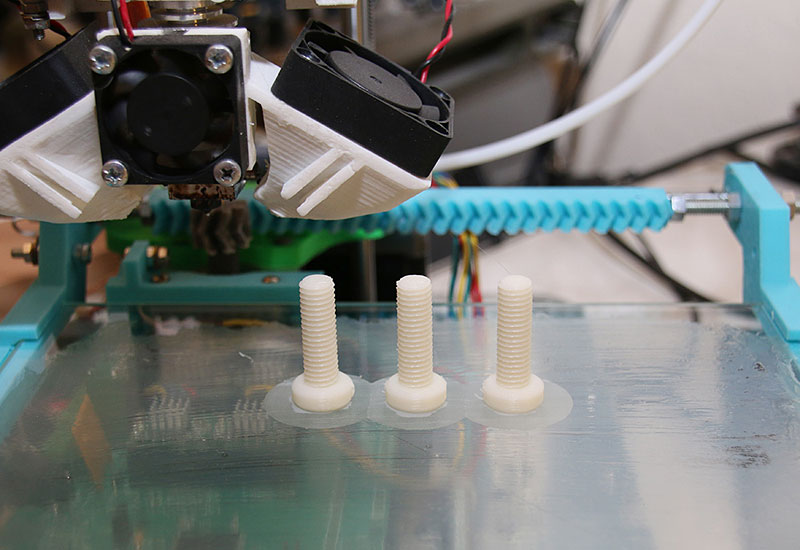 95Iron Grey (RAL 7011) / 2.85mm / 750 gram - €20.65Iron Grey (RAL 7011) / 2.85mm / 2300 gram - €50.95Middle Blue (Pantone 7691 C) / 1.75mm / 750 gram - €20.65Middle Blue (Pantone 7691 C) / 1.75mm / 2300 gram - €50.95Middle Blue (Pantone 7691 C) / 2.85mm / 750 gram - €20.65Middle Blue (Pantone 7691 C) / 2.85mm / 2300 gram - €50.95Yellow Gold (Pantone 466 C) / 1.75mm / 750 gram - €20.65Yellow Gold (Pantone 466 C) / 1.75mm / 2300 gram - €50.95Yellow Gold (Pantone 466 C) / 2.85mm / 750 gram - €20.65Yellow Gold (Pantone 466 C) / 2.85mm / 2300 gram - €50.95Orange Fluor (Pantone 021 C) / 1.75mm / 750 gram - €20.65Orange Fluor (Pantone 021 C) / 1.75mm / 2300 gram - €50.95Orange Fluor (Pantone 021 C) / 2.85mm / 750 gram - €20.65Orange Fluor (Pantone 021 C) / 2.85mm / 2300 gram - €50.95Snow White (Pantone 656 C) / 1.75mm / 750 gram - €20.65Snow White (Pantone 656 C) / 1.75mm / 2300 gram - €50.95Snow White (Pantone 656 C) / 2.85mm / 750 gram - €20.65Snow White (Pantone 656 C) / 2.85mm / 2300 gram - €50.
95Iron Grey (RAL 7011) / 2.85mm / 750 gram - €20.65Iron Grey (RAL 7011) / 2.85mm / 2300 gram - €50.95Middle Blue (Pantone 7691 C) / 1.75mm / 750 gram - €20.65Middle Blue (Pantone 7691 C) / 1.75mm / 2300 gram - €50.95Middle Blue (Pantone 7691 C) / 2.85mm / 750 gram - €20.65Middle Blue (Pantone 7691 C) / 2.85mm / 2300 gram - €50.95Yellow Gold (Pantone 466 C) / 1.75mm / 750 gram - €20.65Yellow Gold (Pantone 466 C) / 1.75mm / 2300 gram - €50.95Yellow Gold (Pantone 466 C) / 2.85mm / 750 gram - €20.65Yellow Gold (Pantone 466 C) / 2.85mm / 2300 gram - €50.95Orange Fluor (Pantone 021 C) / 1.75mm / 750 gram - €20.65Orange Fluor (Pantone 021 C) / 1.75mm / 2300 gram - €50.95Orange Fluor (Pantone 021 C) / 2.85mm / 750 gram - €20.65Orange Fluor (Pantone 021 C) / 2.85mm / 2300 gram - €50.95Snow White (Pantone 656 C) / 1.75mm / 750 gram - €20.65Snow White (Pantone 656 C) / 1.75mm / 2300 gram - €50.95Snow White (Pantone 656 C) / 2.85mm / 750 gram - €20.65Snow White (Pantone 656 C) / 2.85mm / 2300 gram - €50. 95Green Fluor (Pantone 3529 C) / 1.75mm / 750 gram - €20.65Green Fluor (Pantone 3529 C) / 1.75mm / 2300 gram - €50.95Green Fluor (Pantone 3529 C) / 2.85mm / 750 gram - €20.65Green Fluor (Pantone 3529 C) / 2.85mm / 2300 gram - €50.95Leaf Green (RAL 6002) / 1.75mm / 750 gram - €20.65
95Green Fluor (Pantone 3529 C) / 1.75mm / 750 gram - €20.65Green Fluor (Pantone 3529 C) / 1.75mm / 2300 gram - €50.95Green Fluor (Pantone 3529 C) / 2.85mm / 750 gram - €20.65Green Fluor (Pantone 3529 C) / 2.85mm / 2300 gram - €50.95Leaf Green (RAL 6002) / 1.75mm / 750 gram - €20.65
PLA Filament (Polylactic Acid) is a biodegradable polymer coming from renewable organic resources (corn starch or sugarcane). PLA Filament is recyclable but can also be biological decomposed in composting plants. Due to a low shrinkage factor PLA will not deform after cooling, this makes the material ideal for 3D printing on FFF / FDM machines. Polylactic acid is a polyester that is built from several lactic acid units. It is colourless and transparent. PLA has a density of about 1.24 g/cc. The glass temperature is typically around 50 °C and it as a melting temperature between 80 and 150 °C. The decomposing temperature is roughly 250 °C. Polymers made of lactic acid are flammable.
- Great printability
- Biodegradable
- Food contact approved
Printer settings
| Description | Value |
|---|---|
| Printer nozzle temperature | 180 - 220°C |
| Heated bed temperature | 20 - 60°C |
| Bed Adhesion | Magigoo Original on glass or a PEI Sheet |
Physical properties
| Description | Value | Test method |
|---|---|---|
| Density | 1,24 g/cc | ISO 1183 |
| Tensile strength at yield | 66 MPa | ISO 527 |
| Tensile (E) modulus | 3027 MPa | ISO 527 |
| Impact strength - Charpy method 23˚C | 3,4 kJ/m² | ISO 179 |
| Moisture absorption | 1968 ppm | ISO 62 |
| Glass transition temp | 57°C | ISO 11357 |
Measurements & Tolerance
| Size | Diameter tolerance | Roundness |
|---|---|---|
| 1,75 mm Filament | +/- 0,05mm | 95% |
| 2,85 mm Filament | +/- 0,10mm | 95% |
Additional info
To get the best results while printing we advise you to keep the 3D printer in a room where there is hardly any draft and/or temperature fluctuations.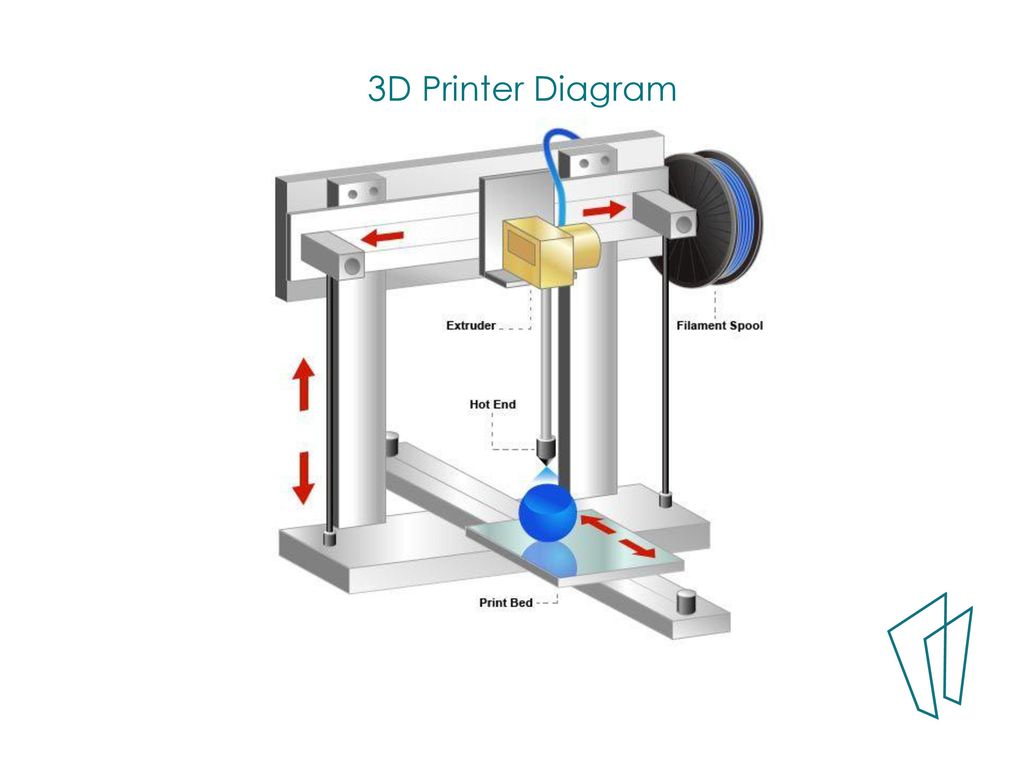 Keep the 3D printer out of the sun.
Keep the 3D printer out of the sun.
When the 3D printer is not being used it is important to keep the 3D4MAKERS PLA Filament in a bag and stored in a cool (15-25˚C) and dry room away from UV light until it is used again.
AmazonAmerican ExpressApple PayDiners ClubGiropayGoogle PayiDEALJCBMaestroMastercardPayPalPaySafeCardShop PaySOFORTVisaYour payment information is processed securely. We do not store credit card details nor have access to your credit card information.
Country
NetherlandsGermanyUnited StatesFrance---AfghanistanÅland IslandsAlbaniaAlgeriaAndorraAngolaAnguillaAntigua & BarbudaArgentinaArmeniaArubaAscension IslandAustraliaAustriaAzerbaijanBahamasBahrainBangladeshBarbadosBelarusBelgiumBelizeBeninBermudaBhutanBoliviaBosnia & HerzegovinaBotswanaBrazilBritish Indian Ocean TerritoryBritish Virgin IslandsBruneiBulgariaBurkina FasoBurundiCambodiaCameroonCanadaCape VerdeCaribbean NetherlandsCayman IslandsCentral African RepublicChadChileChinaChristmas IslandCocos (Keeling) IslandsColombiaComorosCongo - BrazzavilleCongo - KinshasaCook IslandsCosta RicaCroatiaCuraçaoCyprusCzechiaCôte d’IvoireDenmarkDjiboutiDominicaDominican RepublicEcuadorEgyptEl SalvadorEquatorial GuineaEritreaEstoniaEswatiniEthiopiaFalkland IslandsFaroe IslandsFijiFinlandFranceFrench GuianaFrench PolynesiaFrench Southern TerritoriesGabonGambiaGeorgiaGermanyGhanaGibraltarGreeceGreenlandGrenadaGuadeloupeGuatemalaGuernseyGuineaGuinea-BissauGuyanaHaitiHondurasHong Kong SARHungaryIcelandIndiaIndonesiaIraqIrelandIsle of ManIsraelItalyJamaicaJapanJerseyJordanKazakhstanKenyaKiribatiKosovoKuwaitKyrgyzstanLaosLatviaLebanonLesothoLiberiaLibyaLiechtensteinLithuaniaLuxembourgMacao SARMadagascarMalawiMalaysiaMaldivesMaliMaltaMartiniqueMauritaniaMauritiusMayotteMexicoMoldovaMonacoMongoliaMontenegroMontserratMoroccoMozambiqueMyanmar (Burma)NamibiaNauruNepalNetherlandsNew CaledoniaNew ZealandNicaraguaNigerNigeriaNiueNorfolk IslandNorth MacedoniaNorwayOmanPakistanPalestinian TerritoriesPanamaPapua New GuineaParaguayPeruPhilippinesPitcairn IslandsPolandPortugalQatarRéunionRomaniaRussiaRwandaSamoaSan MarinoSão Tomé & PríncipeSaudi ArabiaSenegalSerbiaSeychellesSierra LeoneSingaporeSint MaartenSlovakiaSloveniaSolomon IslandsSomaliaSouth AfricaSouth Georgia & South Sandwich IslandsSouth KoreaSouth SudanSpainSri LankaSt. BarthélemySt. HelenaSt. Kitts & NevisSt. LuciaSt. MartinSt. Pierre & MiquelonSt. Vincent & GrenadinesSudanSurinameSvalbard & Jan MayenSwedenSwitzerlandTaiwanTajikistanTanzaniaThailandTimor-LesteTogoTokelauTongaTrinidad & TobagoTristan da CunhaTunisiaTurkeyTurkmenistanTurks & Caicos IslandsTuvaluU.S. Outlying IslandsUgandaUkraineUnited Arab EmiratesUnited KingdomUnited StatesUruguayUzbekistanVanuatuVatican CityVenezuelaVietnamWallis & FutunaWestern SaharaYemenZambiaZimbabwe
BarthélemySt. HelenaSt. Kitts & NevisSt. LuciaSt. MartinSt. Pierre & MiquelonSt. Vincent & GrenadinesSudanSurinameSvalbard & Jan MayenSwedenSwitzerlandTaiwanTajikistanTanzaniaThailandTimor-LesteTogoTokelauTongaTrinidad & TobagoTristan da CunhaTunisiaTurkeyTurkmenistanTurks & Caicos IslandsTuvaluU.S. Outlying IslandsUgandaUkraineUnited Arab EmiratesUnited KingdomUnited StatesUruguayUzbekistanVanuatuVatican CityVenezuelaVietnamWallis & FutunaWestern SaharaYemenZambiaZimbabwe
Zip code
Returns
Our policy lasts 30 days. If 30 days have gone by since your purchase, unfortunately we can’t offer you a refund or exchange.
To be eligible for a return, your item must be unused and in the same condition that you received it. It must also be in the original packaging.
To complete your return, we require a receipt or proof of purchase.
Any item not in it's original condition, is damaged or missing parts for reasons not due to our error.
Any item that is returned more than 30 days after delivery
Refunds
Once your return is received and inspected, we will send you an email to notify you that we have received your returned item. We will also notify you of the approval or rejection of your refund.
If you are approved, then your refund will be processed, and a credit will automatically be applied to your credit card or original method of payment, within 14 days.
Late or missing refunds
If you haven’t received a refund yet, first check your bank account again.
Then contact your credit card company, it may take some time before your refund is officially posted.
Next contact your bank. There is often some processing time before a refund is posted.
If you’ve done all of this and you still have not received your refund yet, please contact us at [email protected].
Sale items
Only regular priced items may be refunded, unfortunately sale items cannot be refunded.
Exchanges
We only replace items if they are defective or damaged. If you need to exchange it for the same item, send us an email at [email protected] and send your item to: Oudeweg 91-95 Haarlem NL 2031CC.
If you need to exchange it for the same item, send us an email at [email protected] and send your item to: Oudeweg 91-95 Haarlem NL 2031CC.
Gifts
If the item was marked as a gift when purchased and shipped directly to you, you’ll receive a gift credit for the value of your return. Once the returned item is received, a gift certificate will be mailed to you.
If the item wasn’t marked as a gift when purchased, or the gift giver had the order shipped to themselves to give to you later, we will send a refund to the gift giver and he will find out about your return.
Shipping
To return your product, you should mail your product to: Waarderweg 56 Haarlem NL 2031BP
You will be responsible for paying for your own shipping costs for returning your item. Shipping costs are non-refundable. If you receive a refund, the cost of return shipping will be deducted from your refund.
Depending on where you live, the time it may take for your exchanged product to reach you, may vary.
If you are shipping an item over €75, you should consider using a trackable shipping service or purchasing shipping insurance. We don’t guarantee that we will receive your returned item.
PLA plastic for 3D printing
- 1 Plastic composition
- 2 PLA safety
- 3 PLA Specifications
- 4 Advantages of PLA in 3D printing
- 5 Navigation
PLA-plastic (polylactide, PLA) - is a biodegradable, biocompatible, thermoplastic aliphatic polyester, the structural unit of which is lactic acid. nine0018
PLA is made from corn or sugar cane.
Potato and corn starch, soy protein, cassava tubers, cellulose are also used as raw materials.
Today, polylactide is actively used as a consumable for printing on 3D printers.
Natural raw materials in the composition of PLA-plastic allows using it for various purposes without a threat to human health. nine0018
nine0018
The production of PLA plastic significantly reduces carbon dioxide emissions into the atmosphere compared to the production of "petroleum" polymers. The use of fossil resources is reduced by a third, the use of solvents is not required at all.
PLA is usually supplied as a thin filament that is wound on a spool.
| Melting point | 173-178°C |
| Softening point | 50°C |
| Hardness (Rockwell) | R70-R90 |
| Elongation at break | 3.8% |
| Flexural strength | 55.3 MPa |
| Tensile strength | 57.8 MPa |
| Tensile modulus | 3.3 GPa |
| Flexural modulus | 2.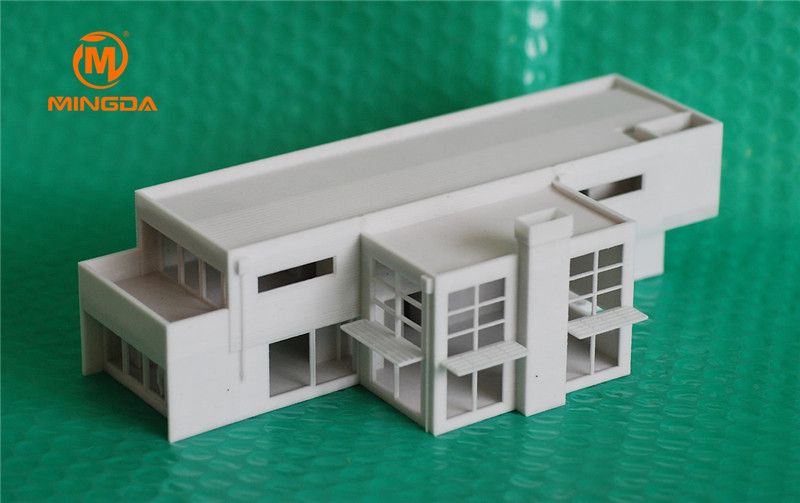 3 GPa 3 GPa |
| Glass transition temperature | 60-65°C |
| Density | 1.23-1.25 g/cm³ |
| Minimum wall thickness | 1 mm |
| Print Precision | ± 0.1% |
| Micron size | 0.3 mm |
| Manufacturing shrinkage | no |
| Moisture absorption | 0.5-50% |
- non-toxic;
- wide color palette;
- when printing, no need for a heated platform;
- dimensions are stable;
- is ideal for moving parts and mechanical models; nine0004
- excellent sliding of details;
- savings in energy costs due to the low softening temperature of the yarn;
- no need to use Kapton to lubricate the surface for building up the prototype;
- smoothness of the surface of the printed product;
- obtaining more detailed and completely ready-to-use objects.

PLA plastic is ideal for 3D printing objects with great detail
Work with PLA plastic on a 3D printer is carried out using FDM-Fused Deposition Modeling technology. The thread is melted, after which it is delivered through a special nozzle to the surface for work and is deposited. As a result of building a model with molten plastic, an object completely ready for use is created. Products made of PLA plastic are subjected to grinding and drilling, painted with acrylic. However, it is worth remembering that the item made of PLA must be handled with care due to its fragility. Another disadvantage of PLA plastic is its fragility: the material lasts from several months to several years. nine0018
PLA is an ideal material for 3D printing prototypes and products that are not expected to be used for a long time. These can be decorative objects, presentation items, and items that require meticulous detailing.
Go to the main page of Encyclopedia of 3D printing
REC Wiki » PLA specs, print settings, tips
Polylactide (PLA, PLA) is a biopolymer that is very popular among 3D printing enthusiasts for two main reasons.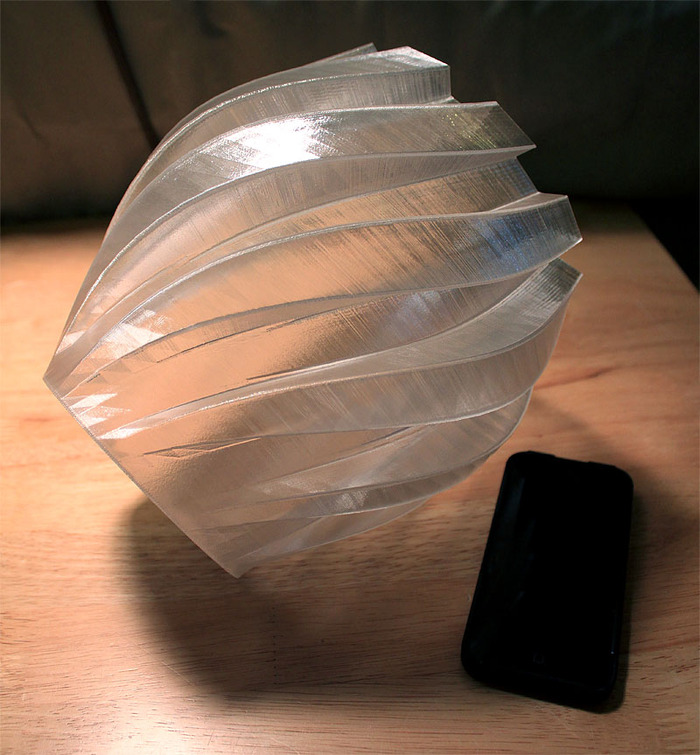 nine0018
nine0018
The main advantages and disadvantages of PLA
First, is an environmentally friendly, biodegradable plastic obtained from natural raw materials - usually agro-industrial waste corn and sugar cane, from which starch is extracted, processed into lactic acid and lactide, and then into the final polymer. It should be borne in mind that the biodegradability of polylactide is conditional in the sense that it does decompose under the influence of microorganisms, but under normal conditions this does not happen so quickly. Rapid processing requires industrial composters, and in dry, clean and cool conditions, the life of PLA products is measured in years. At the same time, the pure material is completely non-toxic, and therefore well suited, for example, for the production of children's toys, provided that non-toxic dyes are used. nine0018
The second highlight of is the ease of 3D printing with polylactide. Among all available materials, this is one of the most picky in terms of the technical capabilities of the equipment used, since PLA does not require high-temperature hot ends, wear-resistant nozzles or heat chambers, and even allows you to do without heated tables. This material is a great choice for beginner 3D printer users.
This material is a great choice for beginner 3D printer users.
Professionals don't miss out on PLA either, as it's well suited for rapid prototyping, mockups, and merchandising with consistent, labor-saving results. nine0018
On the other hand, polylactide is not without drawbacks, among which one can note the extremely low heat resistance (only about 50°C) and rather high brittleness, which complicate the use of this polymer in engineering applications, for example, in the production of loaded structures and parts of mechanisms, as well as making practically impossible for long-term operation of products made of this material in the open air, especially in hot climates. The low heat resistance also makes machining difficult. nine0018
Finally, one more popular use of polylactide is worth mentioning - 3D printing of lost/burnt foundry master models. Here, PLA has a number of advantages, including one non-obvious one: this polymer is relatively cheap and has a low ash content, and the low thermal deformation temperature can be considered not a disadvantage, but an advantage, since a quick loss of strength helps prevent cracking of molds due to thermal expansion of the polymer filling.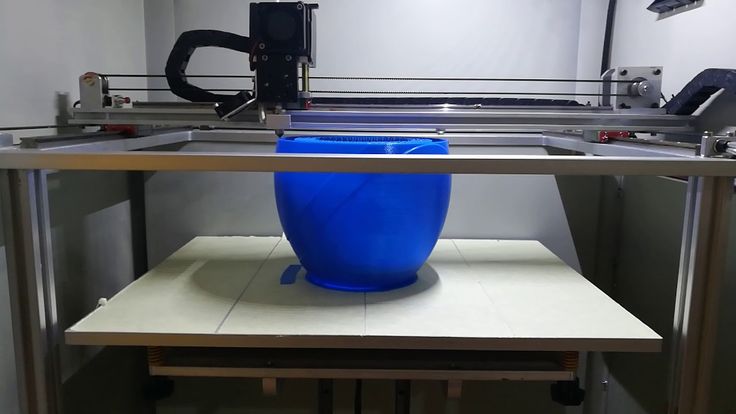 during roasting. nine2
during roasting. nine2
Recommendations for preparation for 3D printing with PLA plastic
Any, even the most budgetary FDM 3D printer, is suitable for 3D printing with polylactide. PLA is characterized by low heat shrinkage, and therefore does not require the use of heat chambers.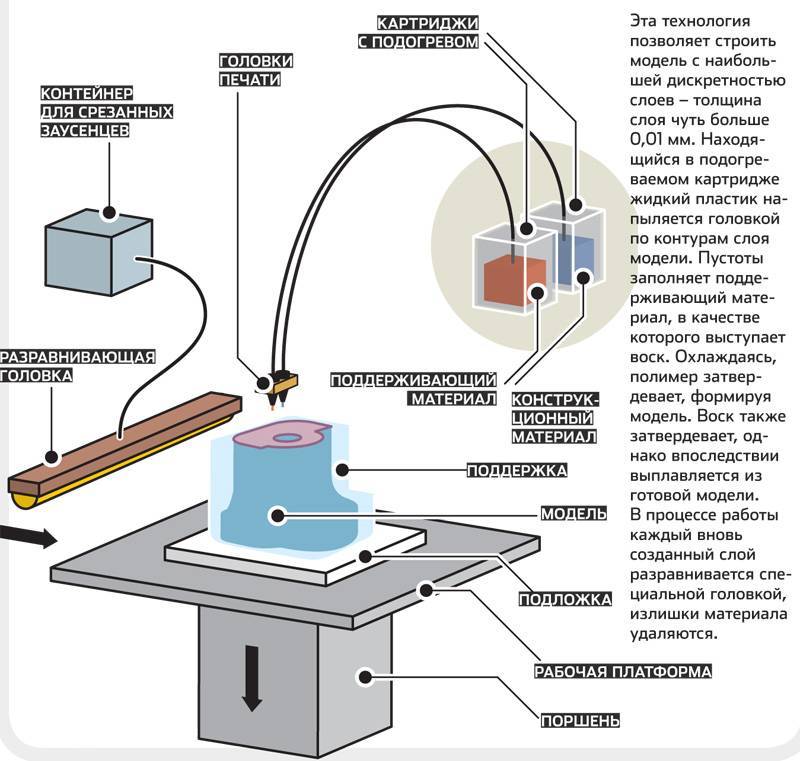 Table heating is optional and redundant in most cases. Moreover, this material hardens for a long time, which, coupled with the initially low temperature of thermal deformation, requires assistance not with heating, but rather with cooling the laid plastic, so that it has time to set and retain its shape when laying subsequent layers and building overhanging elements. For this reason, when working with PLA, it is strongly recommended to turn on the blowing of printed products. For this purpose, the heads of the vast majority of FDM 3D printers are equipped with special factory-made or home-made fans with air supply to the nozzle ( see illustration below ).
Table heating is optional and redundant in most cases. Moreover, this material hardens for a long time, which, coupled with the initially low temperature of thermal deformation, requires assistance not with heating, but rather with cooling the laid plastic, so that it has time to set and retain its shape when laying subsequent layers and building overhanging elements. For this reason, when working with PLA, it is strongly recommended to turn on the blowing of printed products. For this purpose, the heads of the vast majority of FDM 3D printers are equipped with special factory-made or home-made fans with air supply to the nozzle ( see illustration below ).
PLA demonstrates high interlayer adhesion, which is good, and in order for the material to better adhere to the table, it is advisable to cover the working surface with blue masking tape ( as in the illustration below ), hairspray, or a thin layer of glue - a regular stationery glue stick will do or our special, universal composition The3D. In many cases, additional adhesives are not required at all, such as when using 3D printers with special adhesive coatings or glass tables. nine0018
In many cases, additional adhesives are not required at all, such as when using 3D printers with special adhesive coatings or glass tables. nine0018
If necessary, to increase the adhesion to the surface, the stage heating can be turned on, but without excessive heating, bearing in mind the low heat resistance of PLA. For example, you can turn on the heat at the beginning of a 3D print to improve the adhesion of the first layer of the model to the stage or adhesive-assisted coating, and then turn it off so that the stage does not generate excess heat.
As with any material, it is important that you do not exceed the 3D printing speed and temperature when working with PLA. We cannot indicate a specific speed range, since it depends on the equipment used, but regarding the temperature regime, let us explain that heating the hot end above the recommended parameters for the sake of increasing productivity is highly undesirable, since overheating of the material contributes to the formation of carbon deposits inside the hot end and the appearance of plugs in the nozzles.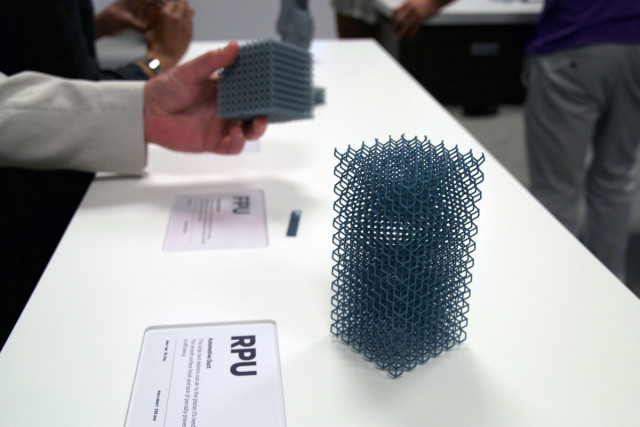 nine0018
nine0018
Recommended settings for 3D printing with REC PLA:
- Nozzle temperature: 200-220°C
- Table temperature: 0-60°C
- Airflow highly desirable
- Recommended adhesives: The3D glue, blue tape
- Minimum nozzle diameter: 0.1 mm
PLA Storage
All polymers are hygroscopic to some degree, and PLA is no exception. Moisture saturation can cause the material in the hot end to boil, with various unpleasant consequences such as intermittent clicks, bubbles, delamination, and other defects. In addition, prolonged exposure to moisture leads to a loss of physical and mechanical properties, so it is desirable to keep the filaments dry. There is nothing complicated here, just pack unused coils in tightly closed plastic bags or containers, after putting a bag of silica gel inside. nine0018
At the same time, this package will prevent the accumulation of dust that can form carbon deposits in the hot end and nozzle.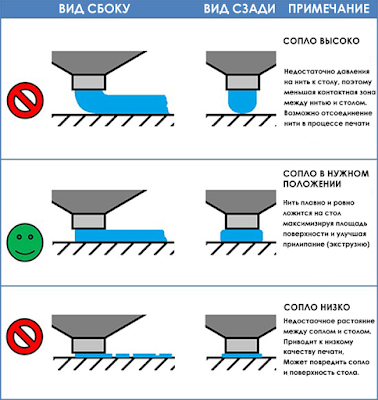 If the plastic is still covered with dust, it is enough to pass the filament through a simple foam filter (for example, this one) on the way from the coil to the hot end right during 3D printing.
If the plastic is still covered with dust, it is enough to pass the filament through a simple foam filter (for example, this one) on the way from the coil to the hot end right during 3D printing.
If necessary, the material can be dried directly before 3D printing. Details on how to properly store and dry plastics can be found in separate articles at these links:
- Storage of filament
- Drying of plastic
Finally, once again we recall the low heat resistance of polylactide and recommend storing the filament in a cool place, away from direct sunlight, radiators, stoves and other heat sources.
PLA post-processing
Polylactide is a hard material but not ideal for machining due to low melting point difficulties. At the same time, it is worth remembering the rather high fragility of this material: if the mechanical action is too strong, cracking is possible, so drilling, milling, engraving and other similar procedures should be approached carefully.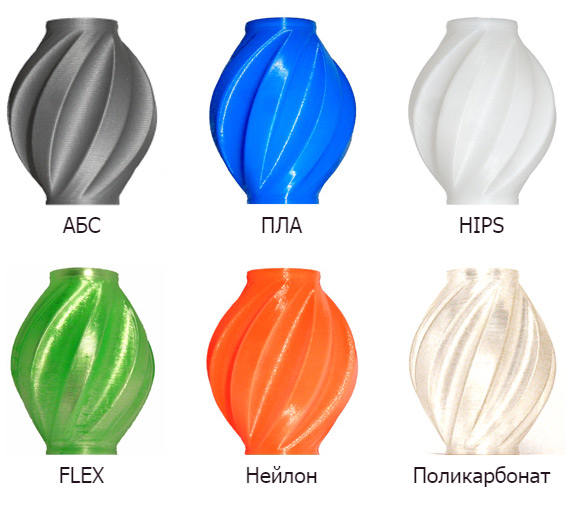 nine0018
nine0018
The material can be painted well with acrylic paints, preferably with a primer. Cyanoacrylate (super glue) can be used for bonding, as well as some solvents, such as dichloroethane and dichloromethane. The latter are also well suited for smoothing surfaces. Be aware that these are toxic, volatile liquids and require strict safety precautions. A safer option for smoothing layers is concentrated limonene. Acetone does not work with PLA. nine0018
Safety of PLA plastic REC
In general, polylactide is considered one of the safest materials in the arsenal of 3D printers, but it should be borne in mind that everything depends on the integrity of the manufacturers - there are no guarantees that cheap filament under dubious the brand will not contain toxic dyes or other additives. We always provide safety information for our 3D printing plastics, including our proprietary polylactide variant, REC PLA. nine3)
Safety certificates are published in a special section of our website.



